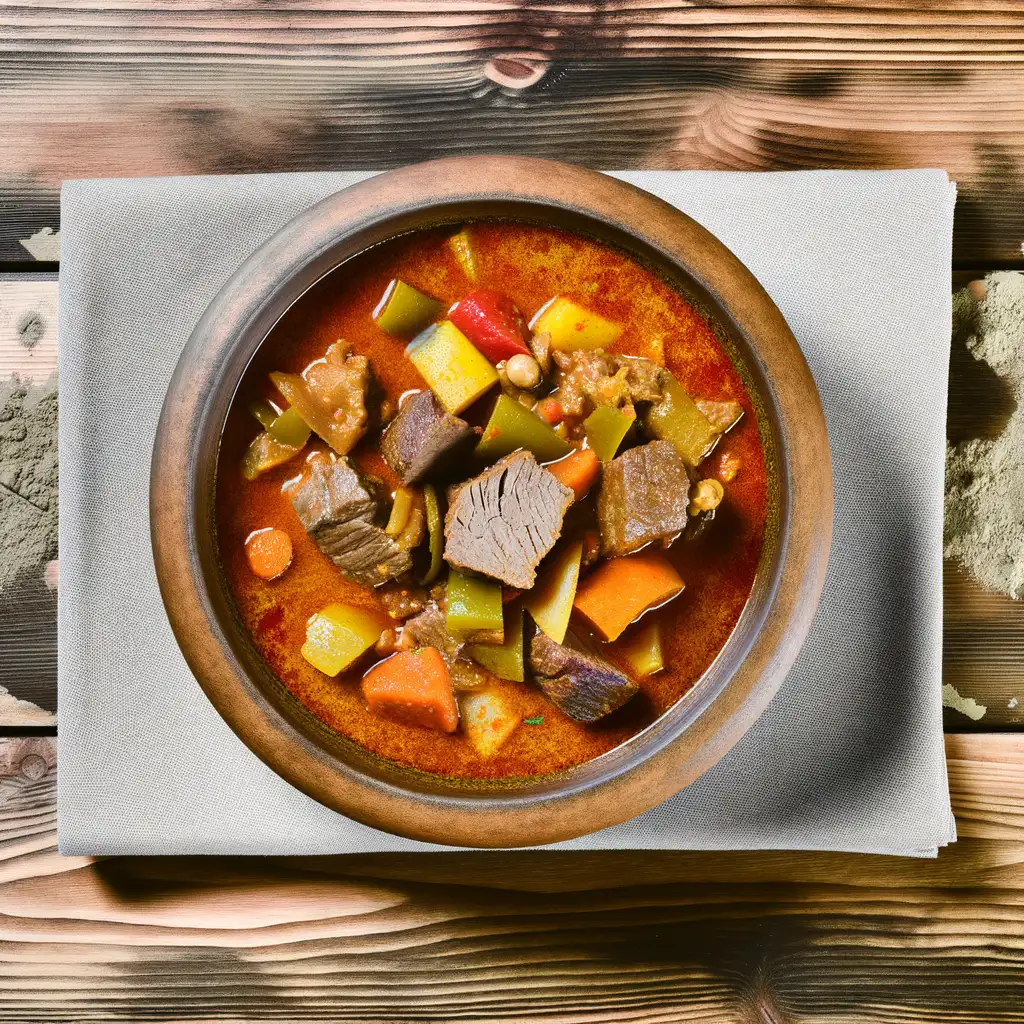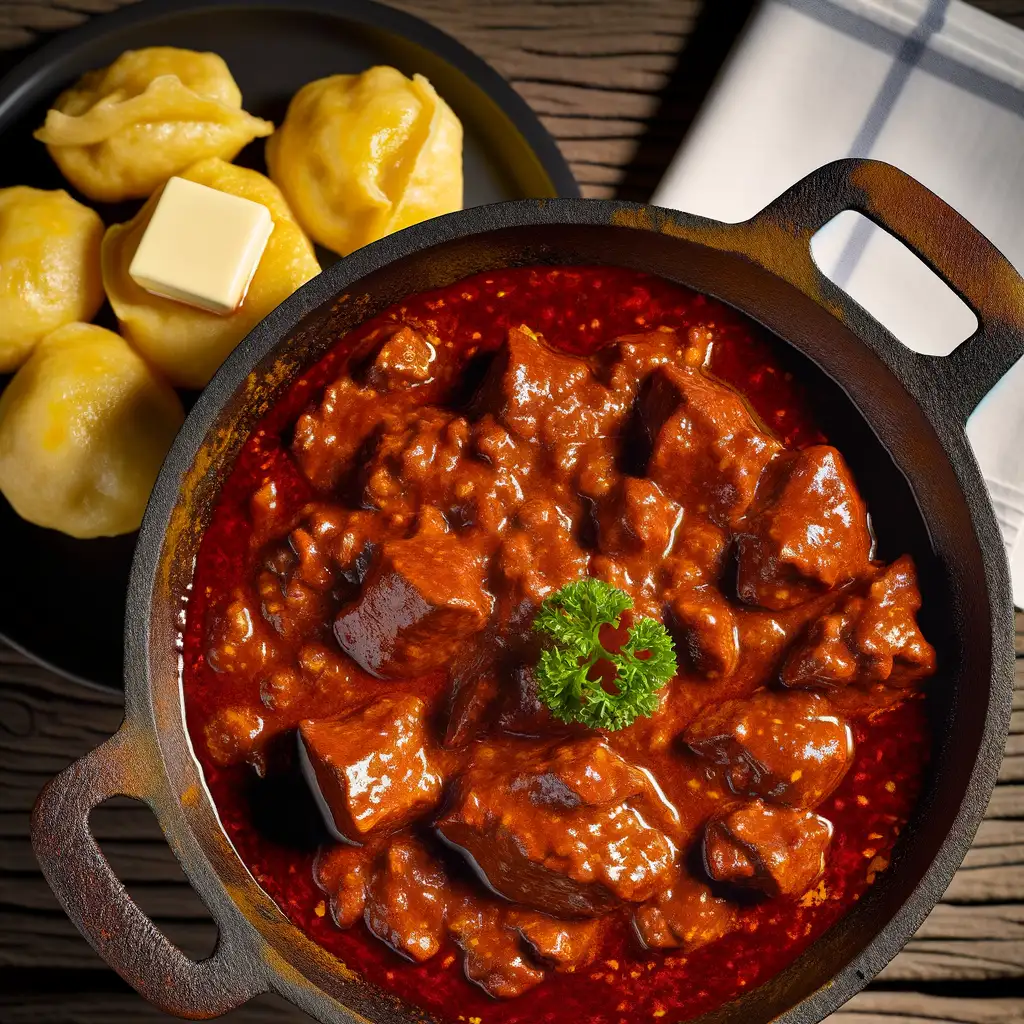



If you find yourself wandering through Hungary,Veszprémi Járás is a place that quietly steals your heart without shouting for attention. The moment you step into this region,there’s a gentle hum of history mingling with the fresh scent of pine and the earthy aroma from nearby vineyards. It’s the kind of place where cobblestone streets invite you to slow down,and the soft chatter of locals at a café spills out onto sun-dappled squares. You can almost taste the warmth in the air,like a comforting hug from a place that’s lived through centuries yet still feels vibrantly alive. Veszprémi Járás carries a unique blend of old-world charm and natural beauty. The rolling hills and lush forests frame the town like a living painting,while the medieval architecture—especially the imposing castle perched above—whispers stories of knights and kings. Walking through the narrow alleys,you’ll catch glimpses of colorful murals and artisan shops,where the craftsmanship feels personal,as if each piece has a story to tell. The local markets buzz with fresh produce and the tempting aroma of traditional Hungarian pastries,making it impossible not to indulge. What really makes Veszprémi Járás special is its pace and spirit. It’s not about rushing from one landmark to another but about soaking in the atmosphere—listening to the church bells echo at dusk,savoring a glass of local wine as the sun sets behind the hills,and feeling a genuine connection to a place that’s both timeless and warmly welcoming. Trust me,it’s a spot that stays with you long after you’ve left.
The information on this page is currently being reviewed by Tripkliq and should be used as a guide only
Eng word: Hello
Eng pronunciation: See-ya
Local language: Szia
Eng word: Goodbye
Eng pronunciation: Vees-laht
Local language: Viszlát
Eng word: Thank you
Eng pronunciation: Kuh-suh-nuhm
Local language: Köszönöm
Eng word: How much
Eng pronunciation: Men-yee-beh keh-rool
Local language: Mennyibe kerül
Eng word: Toilet
Eng pronunciation: Vay-tsay
Local language: WC
Eng word: Help me
Eng pronunciation: Sheg-eet-sheg
Local language: Segítség
Eng word: Yes
Eng pronunciation: Ee-gen
Local language: Igen
Eng word: No
Eng pronunciation: Nem
Local language: Nem
Eng word: Excuse me
Eng pronunciation: El-ney-zesht
Local language: Elnézést
Veszprém is one of the oldest cities in Hungary, with its history dating back to the Roman era. It is often referred to as the 'City of Queens' due to its close association with Hungarian queens throughout history.
Veszprém is home to the first diocese established in Hungary. The Veszprém Archdiocese was founded in the early 11th century, making it a significant center of Christianity in the country.
The Veszprém Castle, perched on Castle Hill, is a historic landmark that dates back to the 10th century. It served as a royal residence and a defensive stronghold during medieval times.
The Gizella Chapel, located within the castle district, is a beautifully preserved 13th-century chapel named after Queen Gizella, the wife of Hungary's first king, Saint Stephen.
The Firewatch Tower, a prominent symbol of Veszprém, was originally built in the 13th century. It offers stunning panoramic views of the city and surrounding landscapes.
The Bishop's Palace, located in the castle district, is a magnificent Baroque building constructed in the 18th century. It remains the residence of the Archbishop of Veszprém.
The Holy Trinity Column, located in the main square of the castle district, was erected in the 18th century as a symbol of gratitude for surviving the plague.
Veszprém played a unique role in Hungarian coronations. The Bishop of Veszprém had the privilege of crowning the queens of Hungary, a tradition that highlights the city's historical importance.
Founded in 1958, the Veszprém Zoo is one of the oldest zoos in Hungary. It is located in a picturesque natural setting and is a popular attraction for families and tourists.
In Veszprémi Járás, the most common Power Adaptor is Type C, Type F.



A hearty soup made with meat, potatoes, and vegetables, seasoned with paprika, and often considered a national dish of Hungary.

A traditional Hungarian stew made with meat (usually beef or pork), onions, and paprika, served with dumplings or bread.

A deep-fried flatbread, often topped with sour cream, cheese, or garlic, popular as a street food snack.

A sweet, spiral-shaped pastry cooked over an open flame, coated in sugar and often flavored with cinnamon or nuts.

A spicy fish soup made with freshwater fish, paprika, and vegetables, typically served with bread.


A pasta dish made with egg noodles, cottage cheese, and bacon, often served as a comforting meal.

A layered potato dish with eggs, sausage, and sour cream, baked until golden and served as a hearty main course.
Budapest feels like stepping into a storybook where history and modern life dance together effortlessly. The moment you stroll along the Danube River,with the majestic Parliament building glowing in the evening light,you sense a city that’s both grand and inviting. There’s a rhythm here—street musicians playing haunting melodies,the clinking of glasses in cozy ruin pubs,and the gentle splash of thermal baths that have been soothing locals for centuries. It’s a place where every corner whispers tales of empires past,yet pulses with youthful energy.
Wandering through the cobbled streets of the Castle District,you catch the scent of fresh pastries mingling with the earthy aroma of old stone walls. The vibrant markets buzz with vendors selling paprika,fresh bread,and sweet chimney cakes,tempting you to taste the rich flavors of Hungarian cuisine. Budapest’s character shines brightest in its contrasts:the elegant Art Nouveau cafés sit side by side with edgy street art,and the grand boulevards lead you to intimate courtyards where locals sip coffee and chat animatedly.
What makes Budapest truly unforgettable is how it wraps you in warmth—whether it’s the steamy embrace of a thermal bath on a chilly day or the friendly chatter in a bustling café. It’s a city that invites you to slow down,savor every moment,and discover stories hidden in its architecture,food,and people. Trust me,once you’ve felt Budapest’s pulse,you’ll carry a piece of it with you long after you leave.
Vienna feels like stepping into a living storybook where every street hums with history and charm. The moment you wander through its grand boulevards,you’re wrapped in a warm embrace of baroque architecture,cozy coffeehouses,and the gentle melodies of street musicians playing waltzes nearby. There’s a rhythm to the city — elegant yet inviting — where the past and present dance together effortlessly.
As you stroll along the Danube or through the lush gardens of Schönbrunn Palace,you catch the scent of freshly baked strudel mingling with the earthy aroma of roasted coffee beans from a nearby café. The city’s café culture is something special; sitting down with a slice of Sachertorte and a strong Viennese coffee feels like a small,delicious ritual. You’ll hear the soft clink of porcelain cups and the murmur of locals deep in conversation,making you feel instantly at home.
Vienna’s character is a blend of refined artistry and genuine warmth. It’s a place where grand opera houses and modern galleries coexist,and where the locals’ pride in their musical heritage is palpable. Whether you’re exploring the vibrant Naschmarkt with its colorful stalls or catching a live performance in a centuries-old concert hall,Vienna invites you to slow down,savor the moment,and soak in its timeless elegance.
Imagine wandering through a city where the old world gently brushes against the new,and every corner hums with a quiet,inviting energy—that’s Zagreb. From the moment you step into its cobbled streets,you’re wrapped in a warm,lived-in charm. The air carries the scent of fresh coffee mingling with blooming linden trees,while the distant chatter from open-air cafés spills into the streets,inviting you to slow down and savor the moment. Zagreb doesn’t shout for attention; it welcomes you like an old friend,with a smile and a story.
The city’s character is a delightful blend of Austro-Hungarian elegance and vibrant Croatian spirit. Strolling through the Upper Town,you’ll catch glimpses of medieval towers and baroque facades,while the Lower Town buzzes with modern life—art galleries,quirky boutiques,and lively markets where you can taste local cheeses,honey,and the unmistakable sweetness of fresh figs. Music often drifts from street performers,adding a soundtrack to your exploration that feels both spontaneous and soulful.
What makes Zagreb truly special is its rhythm—unhurried yet alive. Whether you’re sipping a glass of robust Croatian wine in a cozy tavern or watching the sunset paint the rooftops in shades of gold and rose,there’s a sense of belonging here. It’s a city that invites you to not just see it,but to feel it,to become part of its story,even if just for a little while.
Imagine stepping into a city where every corner feels like a scene from a timeless painting—Venice is exactly that kind of place. The moment you arrive,the gentle lapping of water against ancient stone buildings wraps around you like a soft melody. Instead of streets,there are winding canals,and instead of cars,gondolas glide silently beneath ornate bridges,their oars dipping rhythmically into the emerald water. The air carries a mix of salty sea breeze and the faint aroma of fresh espresso and baked pastries from nearby cafés,inviting you to slow down and savor the moment.
Venice has this magical,almost dreamlike quality. The light here is different—soft and golden in the mornings,casting long shadows on the labyrinth of narrow alleys and colorful facades. You’ll find yourself wandering without a map,getting delightfully lost among the bustling markets,where vendors call out in melodic Italian,selling everything from fresh seafood to vibrant Murano glass. The city’s rich history whispers from every corner,from the grandeur of St. Mark’s Basilica to the quiet charm of tucked-away piazzas where locals sip wine and chat as if time has paused.
What makes Venice truly unforgettable is its rhythm—slow,intimate,and deeply human. It’s a place where you can hear the laughter of children playing by the water,the clinking of glasses in cozy trattorias,and the soft hum of a street musician’s violin. Visiting Venice isn’t just about seeing a city; it’s about feeling its heartbeat,tasting its flavors,and becoming part of its endless story.
If you ever find yourself wandering through the sun-drenched streets of Dubrovnik,you’ll immediately feel like you’ve stepped into a living storybook. The city’s ancient stone walls rise proudly against the sparkling Adriatic,and as you stroll along the marble-paved Stradun,the salty sea breeze mingles with the scent of fresh pine and blooming bougainvillea. There’s a rhythm here—a gentle hum of life where history and modern charm dance together effortlessly.
Dubrovnik’s character is woven into every corner:the clatter of café cups,the murmur of locals chatting in cozy taverns,and the distant call of seagulls overhead. You can almost taste the city in the air—briny and fresh,with hints of grilled seafood and ripe figs from the markets. Sitting at a seaside restaurant,watching the sun dip behind the fortress walls,you’ll savor dishes bursting with Mediterranean flavors,paired with a glass of crisp Croatian white wine.
What makes Dubrovnik truly special is how it balances its rich past with a vibrant present. The city’s narrow alleys invite exploration,revealing tucked-away galleries,artisan shops,and lively squares where music spills out into the streets. Whether you’re tracing the footsteps of ancient mariners or simply soaking up the golden light on a quiet terrace,Dubrovnik feels like a warm embrace—inviting,timeless,and utterly unforgettable.
Prague feels like stepping into a storybook where every corner hums with history and charm. The moment you wander onto the cobblestone streets of the Old Town,you’re wrapped in a warm,timeless embrace. The air carries a mix of fresh-baked pastries and rich coffee from cozy cafés,mingling with the faint scent of aged wood and stone from centuries-old buildings. As you stroll across the iconic Charles Bridge,the soft murmur of the Vltava River below blends with the distant melodies of street musicians,creating a soundtrack that’s both lively and soothing.
What’s truly captivating about Prague is its effortless blend of old and new. Gothic spires and baroque facades stand proudly alongside vibrant street art and bustling markets. The city pulses with a creative energy,from the quirky art galleries tucked away in narrow alleys to the lively beer gardens where locals and travelers clink glasses over hearty Czech fare. There’s a genuine warmth in the way people share their culture,whether it’s through a friendly chat in a pub or an invitation to a traditional music performance.
At night,Prague transforms into a magical place where the city lights dance on the river’s surface and the aroma of roasted chestnuts fills the air. It’s a city that invites you to slow down,savor every moment,and get lost in its stories. Trust me,once you’ve experienced Prague’s unique rhythm and soul,it stays with you long after you’ve left.
Some ATMs may be tampered with skimming devices to steal card information when tourists withdraw cash.
Scammers may approach tourists pretending to collect donations for fake charities or causes.
Tourists may encounter individuals or businesses offering currency exchange at attractive rates, only to receive counterfeit or outdated currency.
Tourists may be sold counterfeit tickets for events, attractions, or transportation, which are invalid upon arrival.
Unlicensed individuals may pose as tour guides, offering subpar or inaccurate tours while charging high fees.
Some taxi drivers may take advantage of tourists by overcharging or taking unnecessarily long routes to increase the fare.
Tourists in crowded areas or public transportation may become targets for pickpockets who work in groups to distract and steal valuables.
Some restaurants may inflate bills by adding hidden charges or charging for items that were not ordered.
Vendors may sell counterfeit or low-quality goods at high prices, claiming they are authentic or handmade.
Hungary has strict drug laws, and the possession, use, or distribution of illegal drugs is a criminal offense. Even small amounts of drugs for personal use can lead to legal consequences, including fines, mandatory rehabilitation programs, or imprisonment. Tourists should avoid any involvement with illegal substances while in Veszprémi Járás or anywhere in Hungary.
In Veszprémi Járás, Hungary, smoking is prohibited in enclosed public spaces, workplaces, public transport, and within a 5-meter radius of entrances to public buildings. Smoking is also banned in playgrounds and certain outdoor areas frequented by children. Designated smoking areas may be available in some locations, but tourists should look for signage to confirm. Violations can result in fines.
The rules for vaping in Veszprémi Járás are similar to those for smoking. Vaping is not allowed in enclosed public spaces, public transport, and other areas where smoking is prohibited. Tourists should be cautious and check for specific restrictions, as some establishments may have their own policies regarding vaping.
What are other people saying about Veszprémi Járás?
Recent Social posts about Veszprémi Járás
There is nothing to show you for now.